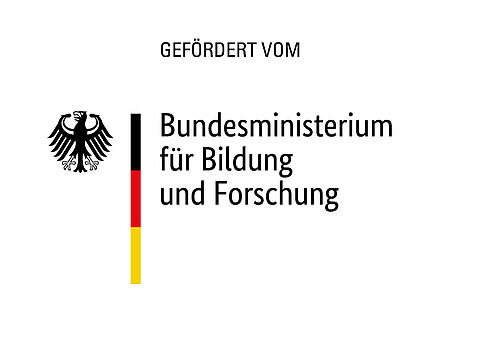BMBF project KI4D4E – Visualisation and analysis of large data volumes in 4D tomography
Synchrotron radiation is considered the world's most brilliant and brightest X-radiation. In other words, resolution is 100 to 1,000 times higher and image quality is far better than the conventional computer tomograms (CT) used in the clinical setting. These types of imaging methods produce huge data volumes. A recently launched research project that brings together researchers from the Fraunhofer research group and the FORWISS Institute at the University of Passau, as well as colleagues from other universities and European research institutions, has been looking for ways to make use of these data. The project "KI4D4E – An AI-based framework for the visualization and evaluation of massive amounts of 4D tomography data for beamline end users" is funded by the Federal Ministry of Education and Research (BMBF) and will be running until 2026.
"We are immensely pleased to be given this opportunity of joining such an exciting project that brings together FORWISS and the Fraunhofer research group at the University of Passau and to share and further develop our joint expertise in a bid to find ways of using data," says Professor Tomas Sauer, who holds the Chair of Mathematics with a focus on Digital Image Processing at the University of Passau, heads the FORWISS Institute, and works in the Development Center X-ray Technology (EZRT) at Fraunhofer IIS.
In the project "KI4D4E", the Fraunhofer research group will be focusing on the enormous data volumes generated in time-resolved computed tomography or 4D-CT using synchrotron radiation: the synchrotron is a special type of particle accelerator that counts as a ring accelerator. In this machine, charged elementary particles or ions are accelerated along an orbit. As a result, they absorb high levels of kinetic energy and release this energy in the form of X-rays which can then be used for experiments. "Simply put, it's comparable to a photograph with an extremely bright flash and short exposure times: what you get are pictures of maximum brilliance in a quality that you can't normally achieve using regular lab facilities," explains Tomas Sauer. Such synchrotrons are accommodated in building structures, of which some have a diameter of up to one kilometre. By putting into operation the new beamline BM18 and the ESRF in Grenoble, high-resolution tomograms of relatively large objects can now be generated.
"These types of scans quickly produce data volumes of the order of several terabytes. And that is precisely where our task begins: using image processing, visualisation, segmentation and compression methods, the data need to be brought into a format that are easy and intuitive to use for users," says Professor Christoph Heinzl who heads the Fraunhofer research group for knowledge-based image processing in Passau. In other words, the data need to be examined and taken apart, relevant parts need to be identified and three-dimensional videos need to be compressed so that users can actually use them. AI methods and machine learning play an important role in this. "There is an enormous demand for synchrotrons in industry. That's why it is so important for us to give them a set of tools that allows for low-threshold management of the data they generate. If we don't, there will come a point where they won't know what to do with the data volumes," says Dr Thomas Lang who will be in charge of the project in the Fraunhofer research group for knowledge-based image processing.
About the "KI4D4E" project
The project "KI4D4E" has been awarded a grant under the framework programme "Exploration of the Universe and Matter" and will be running until 28 June 2026. In addition to the Fraunhofer research group at the University of Passau, the project participants are Friedrich Alexander University in Erlangen-Nürnberg, the Universität of Stuttgart, the Karlsruhe Institute of Technology (KIT), the Fraunhofer Development Center X-ray Technology (EZRT) and the Helmholtz Association. Coordinator is the University of Stuttgart.
About the Fraunhofer Institute for Integrated Circuits in Erlangen and their University of Passau location
The Fraunhofer Institute for Integrated Circuits IIS in Erlangen is a global leader in microelectronic and information technology system solutions and services. Today, it is the largest institute within Fraunhofer-Gesellschaft. Research at Fraunhofer ISS revolves around the guiding topics "Audio and media technologies" as well as "Cognitive sensor technologies". The Fraunhofer Development Center for X-ray Technology is part of Fraunhofer IIS. At its location in Passau, researchers are busy studying and working on ways to make large and highly complex data volumes usable. Segmentation, compression methods and visualisation play a key role in this endeavour.
| Principal Investigator(s) at the University | Prof. Dr. Tomas Sauer (Lehrstuhl für Mathematik mit Schwerpunkt Digitale Bildverarbeitung) |
|---|---|
| Project period | 01.03.2023 - 28.02.2026 |
| Source of funding |  BMBF - Bundesministerium für Bildung und Forschung > BMBF - Bundesministerium für Bildung und Forschung - Hochschulrektorenkonferenz HRK |


